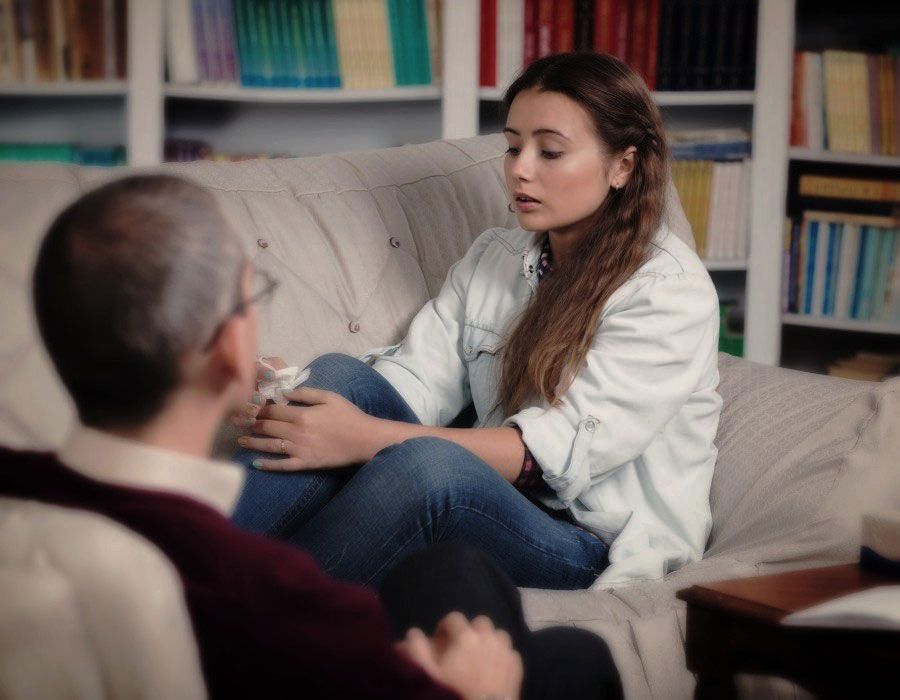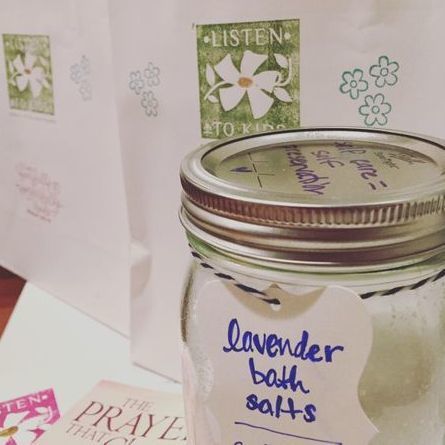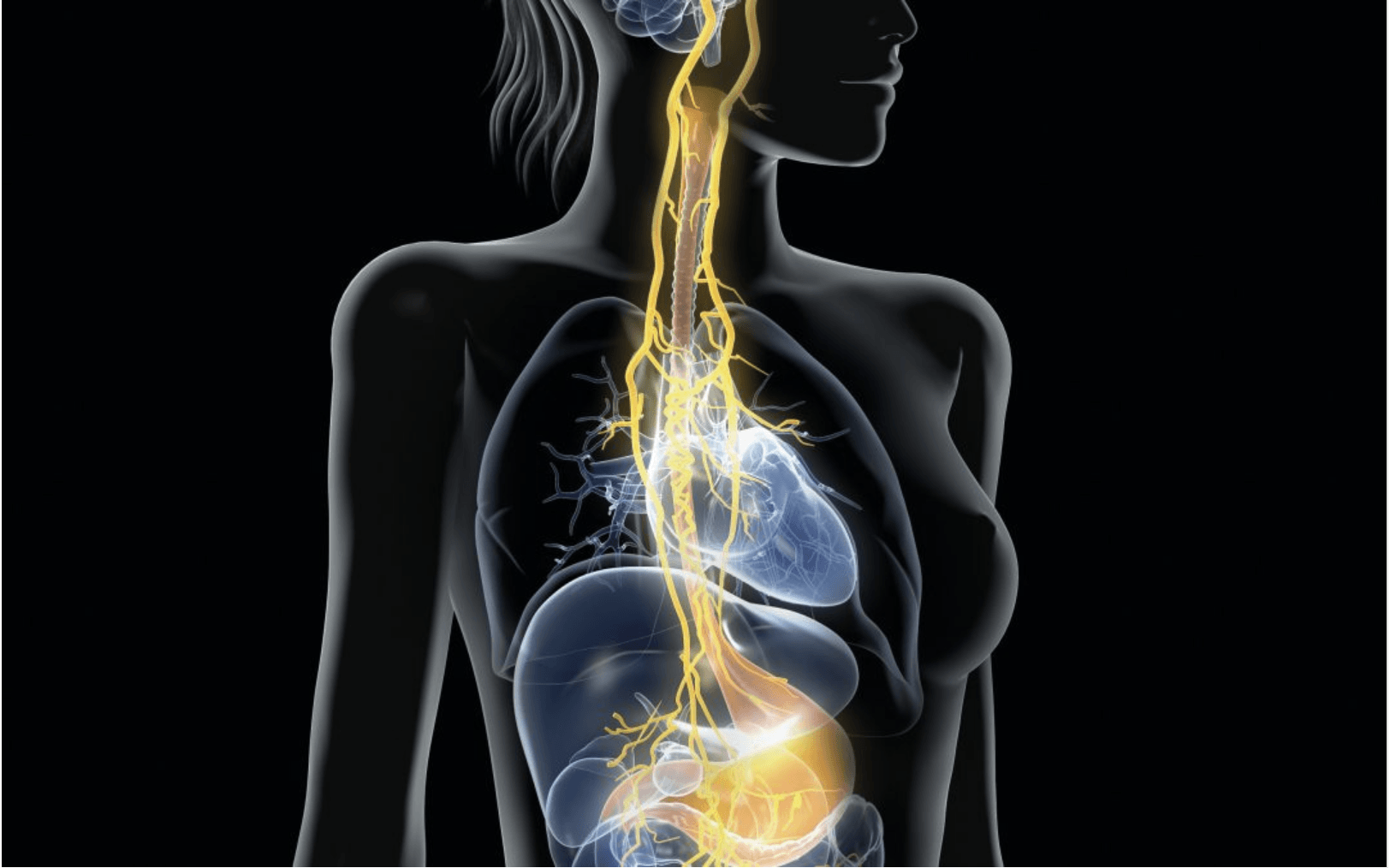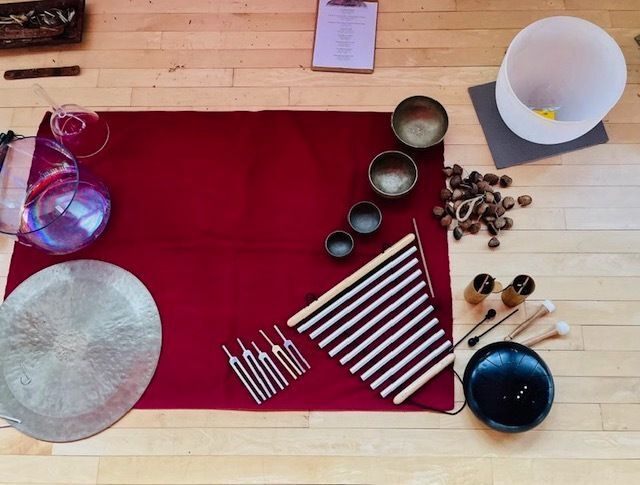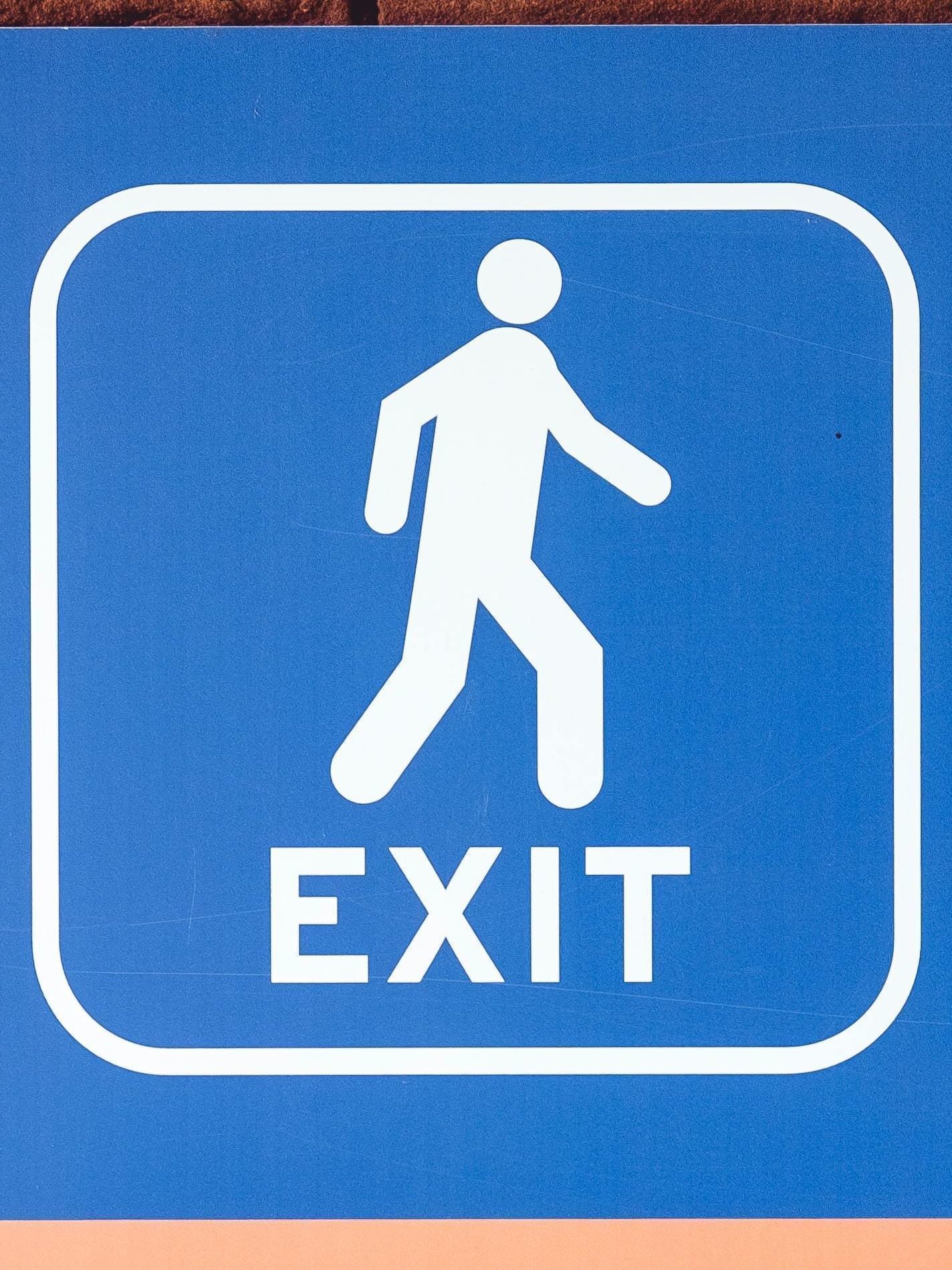$$$$ = very expensive $$$ = expensive $$ = moderately expensive $ = minimally expensive
Talk Therapy with a Certified Counselor or Therapist
$$$, Professional Needed
Talk therapy works. It takes a lot of time and patience, and things may seem to get worse before they get better. However, with the right therapist relationship, you can be empowered to see the world differently and find the courage to face and conquer your worst intrusive memories.
Be picky about your therapist. Ask for recommendations from others you trust, research potential therapists before you call them, and look for any special needs you have, like a therapist of a certain gender, race, or religious perspective. If you feel demeaned, disrespected, or discounted by your therapist, move on to a different one. You are important. Part of your healing is your ability to articulate and state your needs, specifically. Practice this when shopping for a therapist. Don't settle.
Click HERE for our list of local counseling providers.
EMDR (Eye Movement Desensitization and Reprocessing)
$$$, Professional Needed
EMDR involves no medicine. Only a trained practitioner is needed. You'll want to have a trusting relationship with your EMDR therapist before conducting any sessions, as they can be very intense and personal.
I've found EMDR to completely restructure my thinking around the memories we process. EMDR can be used to process specific traumatic memories and integrate them into your consciousness, and it can also be used to address a recurring phobia or addiction.
EMDR is a life-changer. It's hard work & requires dedication, but it's worth it.
Medication
$$$$, Professional Needed
For many survivors, it's almost impossible to talk about horrific memories without medication.
There are dozens of drugs that might help, in combination or alone: SSRIs (for depression), anti-anxiety meds, meds to reduce "night terrors," beta blockers to reduce adrenaline, even ketamine assisted therapy...the list goes on and on.
It's illegal to use these meds without a prescription from a medical doctor. Not every doctor has the specialized training of a psychiatrist, & sadly some doctors don't have your best interests at heart. The nature of Western medical practice can shape a doctor's thoughts around insurance companies, outdated diagnostic formulas, and a lack of naturopathic information. Because of the mental nature of the symptoms these meds treat, the worst case is an immoral psychiatrist who keeps you on meds you don't need for years to collect your copay.
Be picky about your psychiatrist. You're worth it. Look for recommendations. If you have a therapist or doctor you already trust with your traumatic experiences, you should ask them for names of psychiatrists they trust.
Like most all PTSD treatment, finding the right meds or combination of meds at the right dosage can take months. You'll need to be patient. That's why it's key that you trust your psychiatrist.
If your Primary Care Physician or a specialist doctor tries to prescribe you meds to address PTSD, please, PLEASE: Ask them for the name of a local psychiatrist they trust instead, and get the prescription directly from a psychiatrist. Other doctors are not all trained in the nuances & required titration of administering SSRIs, contraindications for mental health meds, and off-brand uses. Trust only a psychiatrist for mental health prescriptions.
Mindfulness & Yoga
$$, Professional Strongly Encouraged
If you've read our description of the previous categories of treatment, you might be sick and tired of me telling you that you'll have to be patient. That's understandable.
When I was at my worst, it was hard for me to survive another day, much less wait months for treatments to be effective. The LAST thing I wanted to do was wait. I would've thought about punching you if you told me to "be patient." That's why I'm not telling you in person.
Here's something you can do RIGHT NOW. Most of the work of re-wiring your brain from PTSD involves training your mind to focus on the present moment. If you can simply concentrate on what's happening right here, right now, in your body, around your body and in your mind, your nervous system automatically calms. Just observe. How can you quiet your loud, frantic thoughts? Breathe.
Mindfulness is the nonjudgmental observation of yourself in the present moment. The practice is to gently pull your mind back from memories of the past or concerns about the future and focus on an "anchor," such as the bottom of your feet as they contact the surface on which they rest. Slow down your breath, and notice every sensation it causes, from inhaling at the nose, through the throat to the lungs, to the tummy. Then notice every detail of your exhale. Observe each of your five senses in that moment: what are you hearing, smelling, feeling? Don't judge it; simply note it.
If you can find the stillness to accomplish this task, you will find relief from PTSD. You can start with one minute, like I did, and slowly increase the duration of your practices. After almost 2 1/2 years of mediation, I can usually accomplish this for about 30 minutes. Practice every day, even if for two minutes. This will create and deepen healthy neuro-pathways in your brain.
The healing power of mindfulness in her own life led Michelle to start Orange Blossom Mindfulness, an off-shoot of Listen to Kids. She earned her Mindful Meditation Teaching Certificate in 2022 and offers donation-based, trauma-informed mindfulness meditation classes in New Orleans. Read more about OM at this link.
Yoga
For me, yoga is mindfulness applied to a body. I find it easier to remain with my physical sensations when I'm moving slowly, or in certain positions that promote healing. If you have PTSD, I strongly suggest starting a Restorative Yoga practice. Find a local yoga studio that offers it, or join me at Swan River Yoga's restorative classes. Restorative Yoga doesn't require yoga experience or even much flexibility. Rather, it's holding a few seated or supine poses for several minutes each with props to support your body so that you can completely let go of any effort. My teacher reminds me that Restorative Yoga "is not about stretching; it's about opening." During Restorative Yoga, you're prompted by the teacher to bring your attention to your body resting on the props or mat. Restorative Yoga is also offered locally at Spyre Center, Dream House Lounge and other yoga studios.
TCTSY (the Trauma Center's Trauma-Sensitive Yoga) is another form of yoga that has been scientifically tested and found to drastically reduce PTSD symptoms for war veterans and victims of sexual assault and trafficking. There are very few certified TCTSY teachers in New Orleans, but Rachael Getecha is a WONDERFUL online TCTSY teacher. Check out her Zoom offerings at Amani Yoga.
Yoga Nidra is a supine practice of guided, body-scan meditation. The goal is to induce and remain in a state of consciousness between waking and sleeping, when the body's healing potential is maximized. There is no movement required during Yoga Nidra, but of course you're allowed to reposition yourself for comfort at any time.
Finally, Qi Gong and Tai Chi are ancient Chinese meditative movement practices. The movements are slow and can bring you into a more embodied presence. There are several local & sometimes free offerings, as well as some amazing follow-along practices on YouTube.
For me, these forms of yoga work as a body/mind reset. If the sickness of PTSD is that our minds detach from our bodies and live in the past, then the medicine is to integrate our bodies with our minds and live in the present, which is the goal of yoga.
I have come to think of mindfulness and these yoga practices as the antidote to PTSD.
IMPORTANT NOTE: Mindfulness and yoga are the most powerful tools we have to recover from PTSD symptoms. However, sometimes paying attention to our bodies, or our thoughts, can actually scare us. Even trigger us. While you practice mindfulness, notice any physical or emotional discomfort; is it the fight/flight/freeze response? Measure it on a scale of 1-10, with 10 being get up and run out of the room, and maybe punch someone in the process. If you're at a 7 or above ANY TIME YOU MEDITATE, open your eyes and look at your physical surroundings. Tell yourself "It's right now. I feel __ under my feet. I'm at __ and I'm with __ who protects me. I'm safe." If those statements just aren't true at the moment, then give yourself permission to end the session. And then congratulate yourself for taking control & knowing your body.
Somatic/Movement Exercises
$, DIY for the most part
Like mindful meditation and yoga, somatic exercises can help heal your body's memory of trauma without requiring any memory or rehashing of traumatic events. "The issues are in your tissues;" we now know that your childhood traumas have imprinted you on a cellular level, and unless you allow your body (bones, muscles, tissues, blood, neurons) to let go of the trauma imprint, healing will be incomplete. All information you take in is filtered and interpreted by your body, so your internal biology determines the state of your mind.
Recent years have produced tons of research which has led to many new somatic exercises. Most of these can be done by reading or watching instructions and in the privacy of your own home. Some of them, (like TRE) you should learn from a certified professional in the therapeutic technique.
Similar to yoga, these simple movements are not strenuous and most people can achieve them.
Key parts of the body which store the biology of trauma are the vagus nerve, the amygdala and hippocampi in the brain, the energy centers along your spine, and the hormonal system. When these areas of your body are in the habit of reacting to life out of a sympathetic nervous system (Fight/Flight/Freeze), your body is generally characterized by contraction, a narrower focus, and a blocked prefrontal cortex (the center of rational though in the brain).
Luckily, we can learn to communicate to our body that we're safe now, and switch our bodies into a parasympathetic nervous system mode (Rest/Digest). In the parasympathetic, our bodies function with expansion, a broader focus on life, and a free-flowing, efficient prefrontal cortex. Trust, creativity, love, and learning can only happen when our bodies are in the parasympathetic mode.
In different ways, whether through stimulating the vagus nerve, or releasing stored stress, or connecting to a reflex we had as infants, each of these exercises instructs your body that it's safe to live in a parasympathetic state more often. The more parasympathetic we can be, the more our bodies can heal our traumas. An excellent source for more information is the work of Peter Levine, including his short book of somatic exercises: Healing Trauma.
A few somatic practices for you to research:
- TRE (Tension & Trauma Release Exercises) *requires a certified professional
- mindful body scan
- TCTSY (the Trauma Center's Trauma-Sensitive Yoga) *requires a certified professional
- Moro Reflex Integration Exercise
- tapping
- alignment *requires professional yoga instructor
- mindful, bi-lateral movement (walking, running, cycling)
- group, rhythmic movement (dancing, drumming, singing...) "Trauma results in a breakdown of attuned physical synchrony," The Body Keeps the Score, p. 215, from subsection: "Communal Rhythms and Synchrony"
- singing, chanting, humming
Massage
$$$, Professional Needed
As I've said before, one of the most destructive symptoms of PTSD is dissociation, when your mind "divorces" your body. People with dissociative disorders may find it difficult to feel physical cues of hunger, or someone touching their foot, for example. In more extreme cases, they may not recognize themselves in a mirror, however briefly.
Massage slowly heals dissociation over time as you experience a firm, healing touch, and learn to track your perception of contact as the massage therapist works on different parts of your body. I've even developed the ability to concentrate on nothing else but the sensation I feel where the therapist's hands are. I'll often use an inner mantra something like this: "Ankle. Ankle. She's working on my left ankle." "Now she's working on my right foot. I can feel my feet."
Habitually clenched muscles are another common PTSD symptom. You may not even realize how tightly you hold your body in place until it's so painful it begins to cause headaches, jaw pain, back pain, joint issues, etc. The danger is over, but your body hasn't gotten the memo. Your body is still "bracing" for trauma. Massage delivers the message: "It's okay. You can relax now." straight to your muscles. Regular massage reinforces that message.
IMPORTANT NOTE: So often, the therapies than can heal us can also trigger us. Think carefully about whether your body is ready to be touched by a stranger. A lot of your readiness will have to do with your relationship with the massage therapist; if you already know & trust them, it's less likely your body will be triggered. The gender of the massage therapist could be a trigger. The space in which the massage is conducted (whether it's dark or bright, how it's decorated, whether there are windows), the kind of music being played, the massage therapist's voice, and any scented essential oils being diffused or used for massage could possibly trigger your body to have a "muscle memory" or flashback of abuse. Know this before you get a massage, and have a plan. Minimize the triggers you can predict. Often, you can have a brief conversation with the therapist before you undress & let him/her know about your triggers, and/or declare areas of your body off-limits for massage today. Be bold & make requests for light levels, music, aromas, etc. (Example: "That music is disturbing me. Can you please change it?") You need to feel safe or massage won't help you.
And remember, if you do get triggered, YOU'RE IN CONTROL. You can simply say out loud: "I'm having a flashback" or "I'm triggered," even if you don't understand exactly why. If you begin having severe (above 7 on a scale of 1-10) urges to fight or flee or freeze, that's your signal to take care of your body & ask to stop the massage. Certified massage therapists are aware of the flashback risks, and will not force you to continue with the massage.
Other considerations before planning a massage:
- Ask your body whether you're more comfortable with a male or female therapist.
- Before you go, consider which of your clothes you'd like to keep on & which you're okay taking off (you never have to be naked).
- Try a few therapists out and stick with a massage therapist you feel comfortable with (try not to have a different massage therapist each time). This will allow you to get familiar with the massage room and your therapist's technique.
- Note that it is "expensive" compared to the quick-fixes we're used to. ($90/hour is a basic, low price) Look into insurance coverage. Hopefully you can begin to think of massage as a medical, preventative expense. Regular massages may save you thousands of dollars in NSAIDs, prescription pain medication, and doctor's bills over the long run.
Aromatherapy
$, DIY
You've probably heard that scent is the sense most closely tied to memory. Aromas are powerful means to change our emotional & mental states.
Experiment with (high quality, organic) essential oils. Start with singular scents (not blends), such as peppermint, lavender, or tea tree. Choose a time in your day or a habit for which you'd like to change your mindset to a more positive orientation. Choose an essential oil you'd like to "pair" with that time or habit, and keep the bottle easily accessible for that time.
Falling asleep used to be very difficult for me; I'd experience a charge of anxiety and fear as I laid in bed. I've paired peppermint essential oil to my bedtime ritual. I put a few drops on my hands and rub them together, then hold them about 2 or 3" away from my face and slowly breathe. I focus my attention on the scent of peppermint as it flows in and out of my body.
Over time, "pairing" an essential oil with a particular situation can create new neural pathways which lead your mind to more positive places and help your body to feel safe.
There are many ways to experience the benefits of essential oils. Before rubbing them directly on your skin, make sure they're medical- or food-grade. Some oils are extremely strong & may cause a burning sensation on skin, especially in more sensitive areas. A diffuser is another lovely way to inject positive scents into your daily routine. Some people sleep with diffusers near their beds, or use them for meditation. Stronger scents like peppermint work nicely in a diffuser. Sprinkling essential oils into a warm bath is also relaxing, but don't use too much peppermint or menthal! :)
Your Five Senses
$, DIY
Our senses are direct pathways to communicate with our bodies when our minds want to ignore our bodies. Just as you need physical and emotional boundaries in order to feel safe, you should be thoughtful about your boundaries around your 5 senses.
We've already talked about scent. (Check out the aromatherapy section.)
Sound
Music! Make yourself playlists that you love, full of songs you associate with calming, safe experiences. Use them ALL THE TIME. When you notice you're feeling down, listen to your curated music. You can even have separate playlists or Spotify channels for different situations or moods: exercise, mediation, nap, calming, encouraging... Try to focus all of your attention on the music when listening. If you're a person of faith, worship music can really shift perspective.
In addition to your own music, look into Sound Therapy, sometimes called a Sound Bath. Tibetan singing bowls, Japanese bamboo chimes, and tuning forks all create vibrations that heal different areas of our body. Every part of our bodies emits a frequency, and the sound waves from these instruments target energy centers in our body (such as the heart, the solar plexus, and the thyroid) and calm them. The calmer our bodies, the more effective & efficient our immune system and nervous systems can be. Swan River Yoga offers Sound Refuge and Sound Bath sessions, and Charlotte Mabry's Restorative Yoga class there is usually accompanied by live sound therapy.
Sight
We take what we see for granted. Often, we disregard the power a negative image has on our pysche. For me, a huge part of creating sight boundaries is researching a movie or TV show before I watch it and limiting my social media consumption. One meme can piss me off for days. You may know the feeling. If I see severe violence toward women or children on TV, I can be thrown off for days. Think about guarding your sense of sight.
Another thing: did you know that some colors have been scientifically proven to promote peace and healing? Look into those & spread them around in your life.
Finally, I write my healing mantras (beliefs that I need my brain to embrace) on sticky notes & put them in strategic places in my life. (Makeup drawer, closet, car dashboard, etc.) It's all about knowing visual input has a huge impact and taking that into your control.
Taste
My favorite meditation "quick-fix" is to eat something pleasant and focus ALL of my mental energy on the sense of taste. You can do this before you take the bite (anticipation, mouth-watering), while enjoying the bite (try to describe the different flavors & sensations), and after you've swallowed the bite (remembering the taste). I'm telling you. That's some good therapy right there. Gets your brain in a totally different place.
Touch
I have separate entry about massage, which is the obvious therapy involving touch. But did you know that our brains release oxytocin when we perceive a positive touch from a trusted person? We even get a little hit of dopamine when we make eye contact with someone we trust. (Okay: eye contact isn't quite touch.)
You can alter your mental state by:
- holding a loved-one's hand and concentrating on the sensations. (warmth? moisture? acceptance?)
- exchanging back rubs with a friend
- focusing all of your attention on touching your clothes, or a pet, or a pleasant texture for you
Nutrition & Supplements
$$$ - Professional Strongly Suggested
For lazer-focused nutritional and supplemental advice, especially in combination with prescribed medication, I strongly suggest you use a Doctor of Naturopathic Medicine (N.D.), also called a Naturopath. A Doctor of Naturopathic Medicine has completed a 4-year, graduate-level naturopathic medical school in addition to earning an M.D. Their knowledge base can be DOUBLE that of an M.D. There are a few in the New Orleans area. Check out these practices:
Dara Wellness, New Orleans
Pate Wellness, Covington
Learning how the food we eat and drink affects our hormones, which in turn dictates the state of our immune systems, is key. As we age, our bodies tend to naturally become depleted of some of the vitamins and minerals required to manufacture a healthy immune system and nervous system. When you add PTSD to the natural depletion, the overactive amygdala, suppressed prefrontal cortex, high levels of cortisol and adrenaline tax the endocrine system, which can malfunction. Many PTSD symptoms are related to endocrine malfunction.
Over the years with my N.D., I've reduced levels of yeast and cortisol in my body while increasing my thyroid function and keeping A1C and blood pressure in check. I've also been able to slowly reduce my dosage of SSRIs with the help of a few supplements and dietary choices. An N.D. is generally more familiar with the contraindications for combining supplements with prescription medicine than someone with only an M.D.




